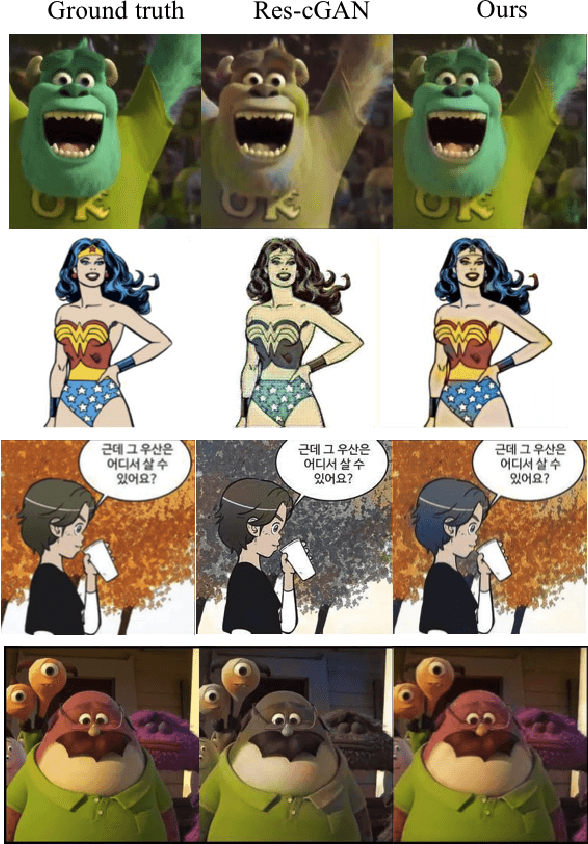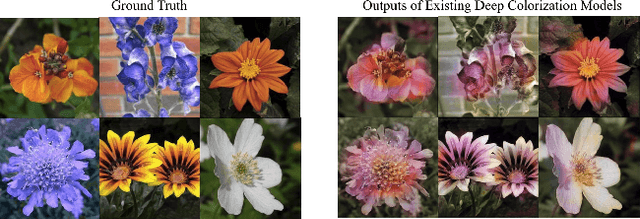Jaehyuk Chang
Reference-Based Sketch Image Colorization using Augmented-Self Reference and Dense Semantic Correspondence
May 11, 2020



Abstract:This paper tackles the automatic colorization task of a sketch image given an already-colored reference image. Colorizing a sketch image is in high demand in comics, animation, and other content creation applications, but it suffers from information scarcity of a sketch image. To address this, a reference image can render the colorization process in a reliable and user-driven manner. However, it is difficult to prepare for a training data set that has a sufficient amount of semantically meaningful pairs of images as well as the ground truth for a colored image reflecting a given reference (e.g., coloring a sketch of an originally blue car given a reference green car). To tackle this challenge, we propose to utilize the identical image with geometric distortion as a virtual reference, which makes it possible to secure the ground truth for a colored output image. Furthermore, it naturally provides the ground truth for dense semantic correspondence, which we utilize in our internal attention mechanism for color transfer from reference to sketch input. We demonstrate the effectiveness of our approach in various types of sketch image colorization via quantitative as well as qualitative evaluation against existing methods.
Coloring With Limited Data: Few-Shot Colorization via Memory-Augmented Networks
Jun 09, 2019



Abstract:Despite recent advancements in deep learning-based automatic colorization, they are still limited when it comes to few-shot learning. Existing models require a significant amount of training data. To tackle this issue, we present a novel memory-augmented colorization model MemoPainter that can produce high-quality colorization with limited data. In particular, our model is able to capture rare instances and successfully colorize them. We also propose a novel threshold triplet loss that enables unsupervised training of memory networks without the need of class labels. Experiments show that our model has superior quality in both few-shot and one-shot colorization tasks.
Interpreting Models by Allowing to Ask
Nov 13, 2018



Abstract:Questions convey information about the questioner, namely what one does not know. In this paper, we propose a novel approach to allow a learning agent to ask what it considers as tricky to predict, in the course of producing a final output. By analyzing when and what it asks, we can make our model more transparent and interpretable. We first develop this idea to propose a general framework of deep neural networks that can ask questions, which we call asking networks. A specific architecture and training process for an asking network is proposed for the task of colorization, which is an exemplar one-to-many task and thus a task where asking questions is helpful in performing the task accurately. Our results show that the model learns to generate meaningful questions, asks difficult questions first, and utilizes the provided hint more efficiently than baseline models. We conclude that the proposed asking framework makes the learning agent reveal its weaknesses, which poses a promising new direction in developing interpretable and interactive models.
 Add to Chrome
Add to Chrome Add to Firefox
Add to Firefox Add to Edge
Add to Edge